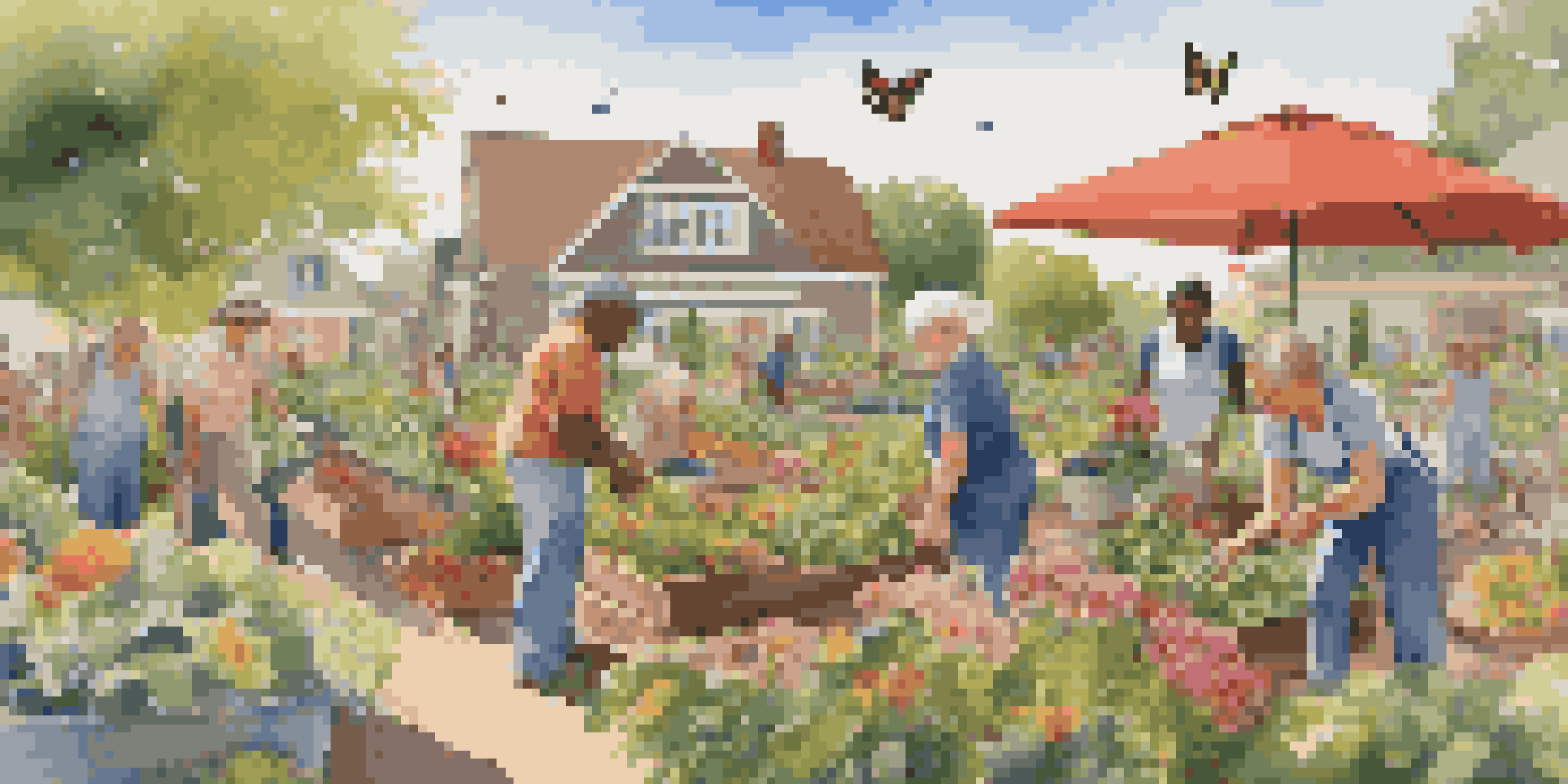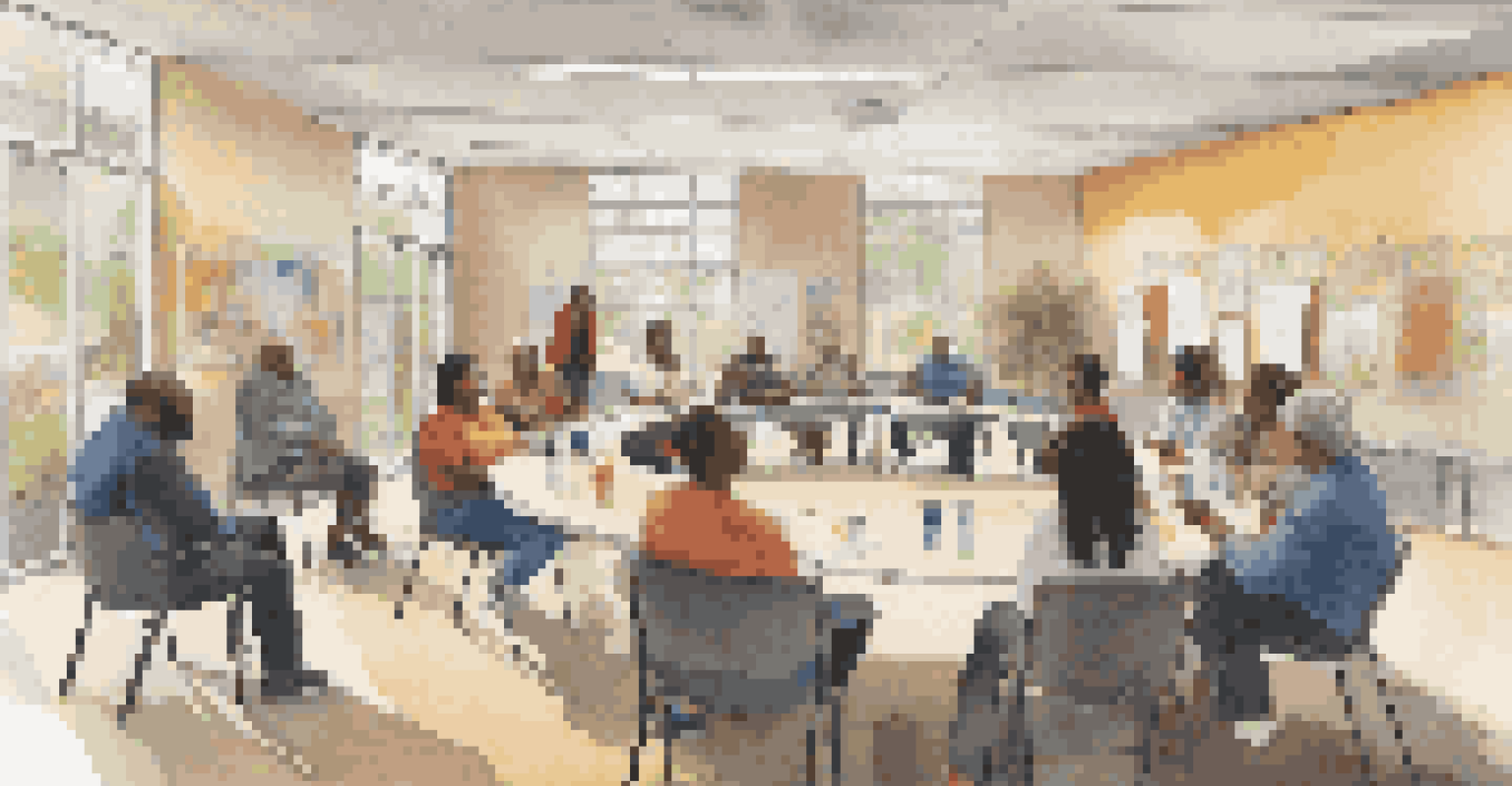Building a Resilient Community: Strategies for Crisis Preparedness

Understanding Community Resilience and Its Importance
Community resilience is the ability to recover from challenges and adapt to change. It's about more than just bouncing back; it's about bouncing forward, learning from experiences, and preparing for future uncertainties. In today's world, where natural disasters and social upheaval can strike unexpectedly, a resilient community is essential for safety and well-being.
Resilience is not about avoiding the storm, but learning how to dance in the rain.
A resilient community fosters strong relationships, encourages local participation, and promotes shared resources. This network of support can be the difference between survival and hardship during a crisis. Think of it like a sturdy tree: the stronger its roots and branches, the better it withstands the storms.
By prioritizing resilience, communities can create a culture that values preparedness and cooperation. This proactive mindset enables everyone to contribute to a safer, more connected environment, ultimately benefiting all members during challenging times.
Assessing Vulnerabilities in Your Community
The first step to building resilience is to understand your community's vulnerabilities. This involves identifying potential risks, such as natural disasters, economic downturns, or social issues that may disrupt daily life. Engaging with community members can provide valuable insights into local concerns and fears.

One effective method of assessment is conducting surveys or focus groups to gather perspectives from diverse voices. This process not only highlights vulnerabilities but also fosters a sense of involvement and ownership among community members. For example, a community might discover that transportation issues hinder access to emergency services.
Community Resilience Defined
Community resilience is about adapting to challenges and learning from experiences to ensure safety and well-being.
Once vulnerabilities are identified, communities can develop targeted strategies to address them. This could involve investing in infrastructure, creating emergency plans, or establishing support networks for those most at risk. By taking these proactive steps, communities can mitigate the impact of crises when they arise.
Building Strong Communication Networks
Effective communication is the backbone of a resilient community. In times of crisis, clear and timely information can help residents make informed decisions and remain calm. Establishing reliable communication channels before a disaster strikes ensures that everyone stays connected when it matters most.
The greatest glory in living lies not in never falling, but in rising every time we fall.
Consider utilizing multiple platforms, such as social media, text alerts, and community meetings, to disseminate information. Each platform caters to different preferences and ensures that no one is left out. Imagine a neighborhood group sending out an alert about an impending storm via text and then following up with a community meeting to discuss preparedness measures.
Additionally, fostering relationships with local media can enhance communication efforts. By partnering with journalists and broadcasters, communities can ensure that critical information reaches a wider audience. Ultimately, a well-informed community is more likely to respond effectively in a crisis.
Creating Emergency Response Plans Together
Developing emergency response plans is crucial for community resilience. These plans outline how to react during various crises, ensuring everyone knows their roles and responsibilities. Involving community members in the planning process helps to create a sense of ownership and commitment.
Start by organizing workshops where residents can brainstorm potential scenarios and solutions. For instance, a community may plan for a flood by identifying safe evacuation routes and establishing designated shelters. This collaborative approach not only enhances preparedness but also strengthens relationships among residents.
Importance of Communication
Effective communication networks are vital for keeping residents informed and connected during crises.
Once the plan is in place, regular drills and updates are essential to keep everyone informed and ready. Think of it as a team practice: the more you train together, the smoother the real game will go. By continually refining the emergency response plan, communities can adapt to changing circumstances and improve their overall resilience.
Fostering Community Engagement and Volunteerism
Engagement and volunteerism are key components of a resilient community. When people feel connected and invested in their neighborhood, they are more likely to contribute to collective efforts during a crisis. Encouraging volunteer opportunities fosters a spirit of cooperation and support.
Consider organizing community events, such as clean-up days or preparedness workshops, to bring residents together. These gatherings not only strengthen bonds but also create a sense of belonging. Picture a neighborhood coming together to build a community garden; this shared effort cultivates both relationships and resources.
Moreover, establishing a volunteer network can facilitate quick mobilization during emergencies. By identifying individuals with specific skills or resources, communities can efficiently allocate assistance where it’s needed most. Ultimately, a culture of volunteerism empowers residents to take initiative and support one another during challenging times.
Building Local Partnerships for Resource Sharing
Collaboration with local organizations enhances community resilience by broadening the resource base. Schools, businesses, nonprofits, and government agencies can all play a vital role in supporting one another during crises. By forging partnerships, communities can pool their strengths to tackle challenges more effectively.
For example, a local food bank might collaborate with a community center to provide meals during a disaster. This synergy allows for more efficient resource distribution and ensures that those in need receive help promptly. Think of it as a potluck: everyone brings something to the table, making the feast richer and more satisfying.
Mental Health in Preparedness
Prioritizing mental health support is essential for helping community members cope with stress during emergencies.
Additionally, these partnerships can lead to sharing knowledge and best practices. By learning from one another’s experiences, communities can refine their strategies and improve their overall preparedness. Strong local partnerships can transform a community into a resilient network capable of facing any crisis.
Promoting Mental Health and Well-Being in Crisis Preparedness
A resilient community takes mental health seriously, especially during crises. The stress and uncertainty that accompany challenging situations can take a toll on individuals and families. Prioritizing mental well-being ensures that community members are supported and equipped to cope effectively.
Integrating mental health resources into crisis preparedness plans is essential. This might involve training volunteers to recognize signs of distress, providing access to counseling services, or organizing community support groups. Picture a warm, inviting space where residents can share their fears and coping strategies; this fosters a sense of belonging and resilience.

Moreover, promoting self-care and stress-relief techniques can empower individuals to manage their mental health proactively. Workshops on mindfulness, exercise, or creative expression can provide valuable tools for coping with stress. When community members feel mentally strong, they are better equipped to support one another during difficult times.
Evaluating and Adapting Your Resilience Strategies
Building a resilient community is an ongoing process that requires regular evaluation and adaptation. After experiencing a crisis, it's important to reflect on the effectiveness of your strategies and identify areas for improvement. This proactive approach ensures that communities continue to grow stronger over time.
Consider conducting post-crisis assessments to gather feedback from residents. This can involve surveys or community meetings where individuals share their experiences and suggestions. By actively listening to community members, you can fine-tune your strategies and address any gaps in preparedness.
Additionally, staying informed about emerging trends and best practices in crisis management can enhance resilience efforts. Engaging with experts or attending workshops can provide fresh insights and innovative solutions. Remember, resilience is not a destination but a journey, and communities must remain committed to learning and adapting.